-
Executive
-
Summary
-
Market Introduction
-
Market Definition
-
Scope of the Study
-
List of Assumptions
-
Markets
-
Structure
-
Market Research Methodology
-
Research Process
-
Primary Research
-
Secondary Research
-
Market Size Estimation
-
Forecast
-
Model
-
Market Dynamics
-
of the Global Water-Soluble Paints Market
-
Introduction
-
Drivers
-
Restraints
-
Opportunities
-
Challenges
-
Trends/Technology
-
Market Factor
-
Analysis of the Global Water-Soluble Paints Market
-
Supply Chain Analysis
-
Porter’s Five Forces Analysis
-
Threat of New Entrants
-
Power of Buyers
-
of Suppliers
-
Pricing Analysis
-
Raw Material Suppliers
-
Manufacturers/Producers
-
Distributors/Retailers/Wholesalers/E-Commerce
-
End User
-
Bargaining
-
Bargaining Power
-
Threat of Substitutes
-
Intensity of Competitive Rivalry
-
Global Water-Soluble
-
Paints Market, by Material Type
-
Introduction
- Market Estimates &
-
Acrylic
-
Market Estimates & Forecast, 2020-2027
-
Forecast, by Region, 2020-2027
-
Polyurethane
- Market Estimates & Forecast,
- Market Estimates & Forecast, by Region, 2020-2027
-
Polyester
- Market Estimates & Forecast, 2020-2027
- Market
-
Estimates & Forecast, by Region, 2020-2027
-
Vinylic
- Market Estimates
- Market Estimates & Forecast, by
- Market Estimates & Forecast, 2020-2027
-
& Forecast, 2020-2027
-
Region, 2020-2027
-
Alkyd
-
Market Estimates & Forecast, by Region, 2020-2027
-
Epoxy
- Market Estimates &
- Market Estimates & Forecast,
- Market Estimates & Forecast, by Region, 2020-2027
-
Market Estimates & Forecast, 2020-2027
-
Forecast, by Region, 2020-2027
-
Epoxy Esters
-
Others
- Market Estimates & Forecast, 2020-2027
- Market
-
Estimates & Forecast, by Region, 2020-2027
-
Global
-
Water-Soluble Paints Market, by Application
-
Introduction
-
Residential
- Market Estimates &
- Market Estimates & Forecast, by Region,
-
Forecast, 2020-2027
-
Commercial
- Market Estimates
- Market Estimates & Forecast, by
-
& Forecast, 2020-2027
-
Region, 2020-2027
-
Infrastructure
- Market
- Market Estimates & Forecast,
-
Estimates & Forecast, 2020-2027
-
by Region, 2020-2027
-
Automotive
- Market
- Market Estimates & Forecast,
-
Estimates & Forecast, 2020-2027
-
by Region, 2020-2027
-
Others
- Market
- Market Estimates & Forecast,
-
Estimates & Forecast, 2020-2027
-
by Region, 2020-2027
-
Global Water-Soluble Paints Market,
-
by Region
-
Introduction
-
North
- Market Estimates & Forecast, 2020-2027
- Market Estimates & Forecast, by Material Type, 2020-2027
- Market Estimates & Forecast, by Application, 2020-2027
- US
-
America
-
Market Estimates & Forecast, 2020-2027
-
Type, 2020-2027
-
Market Estimates & Forecast, by Application, 2020-2027
-
Canada
-
Market Estimates & Forecast, 2020-2027
-
& Forecast, by Application, 2020-2027
-
Market Estimates & Forecast, by Material Type, 2020-2027
-
Market Estimates
-
Europe
- Market Estimates & Forecast, 2020-2027
-
Market Estimates & Forecast, by Material Type, 2020-2027
-
Market Estimates & Forecast, by Application, 2020-2027
-
Germany
-
Market Estimates & Forecast, 2020-2027
-
Type, 2020-2027
-
Market Estimates & Forecast, by Material
-
Market Estimates & Forecast, by Application, 2020-2027
-
France
-
Market Estimates & Forecast, 2020-2027
-
Estimates & Forecast, by Application, 2020-2027
-
Italy
-
Estimates & Forecast, 2020-2027
-
& Forecast, by Application, 2020-2027
-
& Forecast, 2020-2027
-
Forecast, by Application, 2020-2027
-
Forecast, 2020-2027
-
Market Estimates & Forecast, by Material Type,
-
Market
-
Market
-
Market Estimates & Forecast, by Material Type, 2020-2027
-
Market Estimates
-
Spain
-
Market Estimates
-
Market Estimates & Forecast, by Material Type,2020-2027
-
Market Estimates &
-
UK
-
Market Estimates &
-
Market Estimates & Forecast, by Material Type,2020-2027
-
by Application, 2020-2027
-
Forecast, 2020-2027
-
Market Estimates & Forecast,
-
Russia
-
Market Estimates &
-
Market Estimates & Forecast, by Material Type,2020-2027
-
by Application, 2020-2027
-
Estimates & Forecast, by Material Type, 2020-2027
-
Application, 2020-2027
-
& Forecast, 2020-2027
-
& Forecast, by Application, 2020-2027
-
Market Estimates & Forecast,
-
Poland
-
Market Estimates & Forecast,
-
Market
-
Market Estimates & Forecast, by
-
Rest of Europe
-
Market Estimates
-
Market Estimates & Forecast, by Material Type, 2020-2027
-
Market Estimates
-
Asia-Pacific
- Market Estimates & Forecast, 2020-2027
-
Market Estimates & Forecast, by Material Type, 2020-2027
-
Market Estimates & Forecast, 2020-2027
-
by Material Type, 2020-2027
-
& Forecast, by Material Type, 2020-2027
-
& Forecast, by Material Type, 2020-2027
-
& Forecast, 2020-2027
-
& Forecast, by Application, 2020-2027
-
of Asia-Pacific
-
Market Estimates & Forecast, 2020-2027
-
Type, 2020-2027
-
Market Estimates & Forecast, by Application, 2020-2027
-
China
-
Market Estimates & Forecast,
-
Market Estimates & Forecast, by Application, 2020-2027
-
India
-
Market Estimates & Forecast, 2020-2027
-
Market Estimates
-
Market Estimates & Forecast, by Application,
-
Japan
-
Market Estimates & Forecast, 2020-2027
-
Market Estimates
-
Market Estimates & Forecast, by Application,
-
Australia & New Zealand
-
Market Estimates
-
Market Estimates & Forecast, by Material Type, 2020-2027
-
Market Estimates
-
Rest
-
Market Estimates & Forecast, by Material
-
Market Estimates & Forecast, by Application, 2020-2027
-
Middle East & Africa
- Market Estimates & Forecast, 2020-2027
-
Market Estimates & Forecast, by Material Type, 2020-2027
-
Market Estimates & Forecast, 2020-2027
-
& Forecast, by Application, 2020-2027
-
Forecast, 2020-2027
-
Market Estimates & Forecast, by Application, 2020-2027
-
GCC
-
Market Estimates & Forecast, by Material Type, 2020-2027
-
Market Estimates
-
Israel
-
Market Estimates &
-
Market Estimates & Forecast, by Material Type, 2020-2027
-
Forecast, by Application, 2020-2027
-
& Forecast, 2020-2027
-
Forecast, by Application, 2020-2027
-
Forecast, 2020-2027
-
Market Estimates &
-
North Africa
-
Market Estimates
-
Market Estimates & Forecast, by Material Type, 2020-2027
-
Market Estimates &
-
Turkey
-
Market Estimates &
-
Market Estimates & Forecast, by Material Type, 2020-2027
-
Forecast, by Application, 2020-2027
-
& Africa
-
Market Estimates & Forecast, 2020-2027
-
Type, 2020-2027
-
Market Estimates &
-
Rest of Middle East
-
Market Estimates & Forecast, by Material
-
Market Estimates & Forecast, by Application, 2020-2027
-
Latin America
-
& Forecast, by Material Type, 2020-2027
-
Forecast, by Material Type, 2020-2027
-
by Material Type, 2020-2027
-
& Forecast, by Material Type, 2020-2027
-
Market Estimates & Forecast,
-
Market Estimates & Forecast, by Material Type,
-
Market Estimates & Forecast, by Application,
-
Brazil
-
Market Estimates & Forecast, 2020-2027
-
Market Estimates
-
Market Estimates & Forecast, by Application, 2020-2027
-
Argentina
-
Market Estimates & Forecast, 2020-2027
-
Market Estimates &
-
Market Estimates & Forecast, by Application, 2020-2027
-
Mexico
-
Market Estimates & Forecast, 2020-2027
-
Market Estimates & Forecast,
-
Market Estimates & Forecast, by Application, 2020-2027
-
Rest of Latin America
-
Market Estimates & Forecast, 2020-2027
-
Market Estimates
-
Market Estimates & Forecast, by Application, 2020-2027
-
Company Landscape
-
Introduction
-
Market Strategies
-
Key Development Analysis (Expansion/Merger & Acquisitions/Joint
-
Venture/New Product Development/Agreement/Investment)
-
Company
-
Profiles
-
BASF SE
- Company Overview
- Financial Updates
- Key Developments
- SWOT Analysis
-
Product/Business Segment Overview
-
Key Strategies
-
AkzoNobel
- Company Overview
- Key
- Key Developments
-
N.V.
-
Financial Updates
-
Product/Business Segment Overview
-
Strategies
-
SWOT Analysis
-
Axalta Coating Systems
- Financial Updates
- Product/Business Segment Overview
- Key Strategies
- SWOT Analysis
-
Company Overview
-
Key Developments
-
Berger Paints India Limited
- Company Overview
- Key
- Key Developments
-
Financial Updates
-
Product/Business Segment Overview
-
Strategies
-
SWOT Analysis
-
Kansai Paint Co., Ltd.
- Financial Updates
- Product/Business Segment Overview
- Key Strategies
- SWOT Analysis
-
Company Overview
-
Key Developments
-
NIPSEA GROUP
- Company
- Financial Updates
- Product/Business Segment Overview
- Key Developments
- SWOT Analysis
-
Overview
-
Key Strategies
-
PPG
- Company Overview
- Key
- Key Developments
-
Industries Inc.
-
Financial Updates
-
Product/Business Segment Overview
-
Strategies
-
SWOT Analysis
-
Rpm International Inc.
- Company Overview
- Product/Business
- Key Strategies
- Key Developments
-
Financial Updates
-
Segment Overview
-
SWOT Analysis
-
The Sherwin-Williams
- Company Overview
- Product/Business
- Key Strategies
- Key Developments
-
Financial Updates
-
Segment Overview
-
SWOT Analysis
-
asian paint
- Company Overview
- Financial Updates
- Key Developments
- SWOT Analysis
-
Product/Business Segment Overview
-
Key Strategies
-
TIKKURILA OYJ
- Financial
- Product/Business Segment
- Key Strategies
- SWOT Analysis
-
Company Overview
-
Updates
-
Overview
-
Key Developments
-
Valspar
- Company Overview
- Product/Business
- Key Strategies
- Key Developments
-
Financial Updates
-
Segment Overview
-
SWOT Analysis
-
Chenyang Group Ltd
- Company
- Financial Updates
- Product/Business Segment Overview
- Key Developments
- SWOT Analysis
-
Overview
-
Key Strategies
-
Jotun
- Financial Updates
- Product/Business Segment Overview
- Key Strategies
- SWOT Analysis
-
Company Overview
-
Key Developments
-
Sika AG
- Company
- Financial Updates
- Product/Business Segment Overview
- Key Developments
- SWOT Analysis
-
Overview
-
Key Strategies
-
Conclusion
-
LIST OF TABLES
-
Global
-
Water-Soluble Paints Market: by Region, 2020-2027
-
North
-
America: Water-Soluble Paints Market, by Country, 2020-2027
-
Table 3
-
Europe: Water-Soluble Paints Market, by Country, 2020-2027
-
Table 4
-
Asia-Pacific: Water-Soluble Paints Market. by Country, 2020-2027
-
Table
-
Middle East & Africa: Water-Soluble Paints Market, by Country,
-
Latin America: Water-Soluble Paints Market,
-
by Country, 2020-2027
-
Global Water-Soluble Paints
-
Material Type Market, by Regions, 2020-2027
-
North
-
America: Water-Soluble Paints Material Type Market, by Country, 2020-2027
-
Table
-
Europe: Water-Soluble Paints Material Type Market, by Country,
-
Table10 Asia-Pacific: Water-Soluble Paints Material
-
Type Market, by Country, 2020-2027
-
Table11 Middle East &
-
Africa: Water-Soluble Paints Material Type Market, by Country, 2020-2027
-
Table12
-
Latin America: Water-Soluble Paints Material Type Market, by Country, 2020-2027
-
Global Water-Soluble Paints Application Market, by
-
Regions, 2020-2027
-
Table14 North America: Water-Soluble Paints
-
Application Market, by Country, 2020-2027
-
Table15 Europe:
-
Water-Soluble Paints Application Market, by Country, 2020-2027
-
Table16
-
Asia-Pacific: Water-Soluble Paints Application Market, by Country, 2020-2027
-
Table17 Middle East & Africa: Water-Soluble Paints Application
-
Market, by Country, 2020-2027
-
Table18 Latin America: Water-Soluble
-
Paints by Application Market, by Country, 2016-2023
-
Table19
-
Global Material Type Market, by Region, 2020-2027
-
Table20
-
Global Application Market, by Region, 2020-2027
-
Table21 North
-
America: Water-Soluble Paints Market, by Country, 2020-2027
-
Table22
-
North America: Water-Soluble Paints Market, by Material Type, 2020-2027
-
Table23 North America: Water-Soluble Paints Market, by Application,
-
Table24 Europe: Water-Soluble Paints Market,
-
by Country, 2020-2027
-
Table25 Europe: Water-Soluble Paints
-
Market, by Material Type, 2020-2027
-
Table26 Europe:
-
Water-Soluble Paints Market, by Application, 2020-2027
-
Table27
-
Asia-Pacific: Water-Soluble Paints Market, by Country, 2020-2027
-
Table28 Asia-Pacific: Water-Soluble Paints Market, by Material
-
Type, 2020-2027
-
Table29 Asia-Pacific: Water-Soluble Paints
-
Market, by Application, 2020-2027
-
Table30 Middle East
-
& Africa: Water-Soluble Paints Market, by Country, 2020-2027
-
Table31
-
Middle East & Africa: Water-Soluble Paints Market, by Material Type, 2020-2027
-
Table32 Middle East & Africa: Water-Soluble Paints
-
Market, by Application, 2020-2027
-
Table33 Latin America:
-
Water-Soluble Paints Market, by Country, 2020-2027
-
Table34
-
Latin America: Water-Soluble Paints Market, by Material Type, 2020-2027
-
Table35 Latin America: Water-Soluble Paints Market, by Application,
-
LIST OF FIGURES
-
Global
-
Water-Soluble Paints Market Segmentation
-
Forecast Research
-
Methodology
-
Five Forces Analysis of the Global Water-Soluble
-
Paints Market
-
Value Chain of the Global Water-Soluble
-
Paints Market
-
Share of the Global Water-Soluble Paints
-
Market in 2020, by Country
-
Global Water-Soluble
-
Paints Market, 2020-2027,
-
Global Water-Soluble Paints
-
Market Size, by Material Type, 2020
-
Share of the Global
-
Water-Soluble Paints Market, by Material Type, 2020-2027
-
Global
-
Water-Soluble Paints Market Size, by Application, 2020
-
FIGURE10 Share
-
of the Global Water-Soluble Paints Market, by Application, 2020-2027

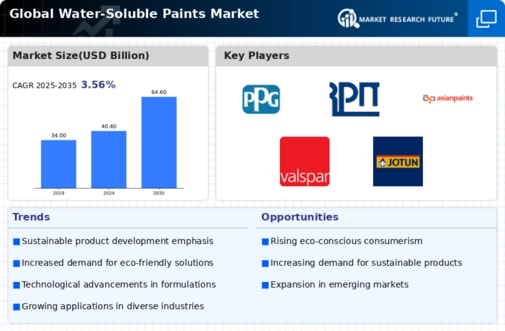
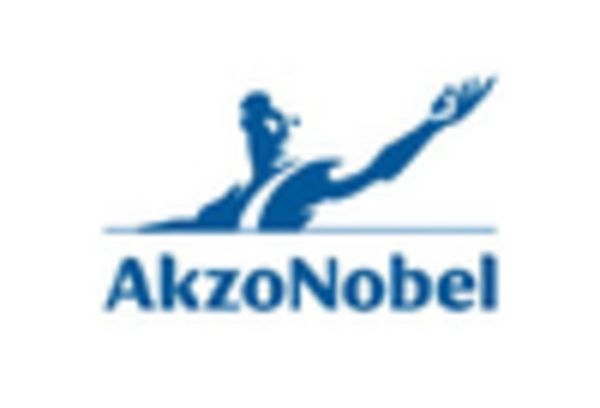

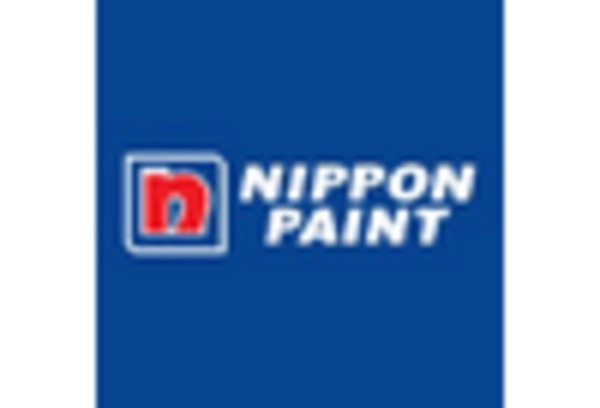
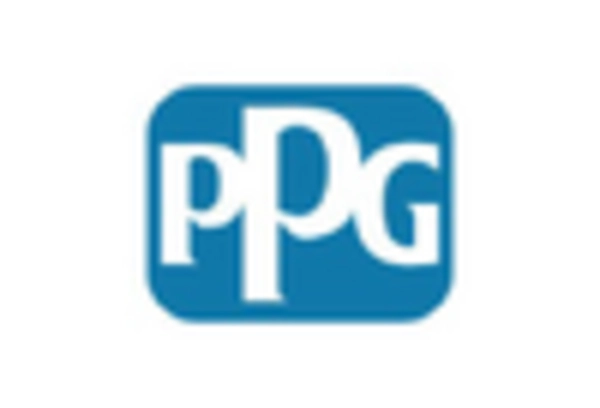
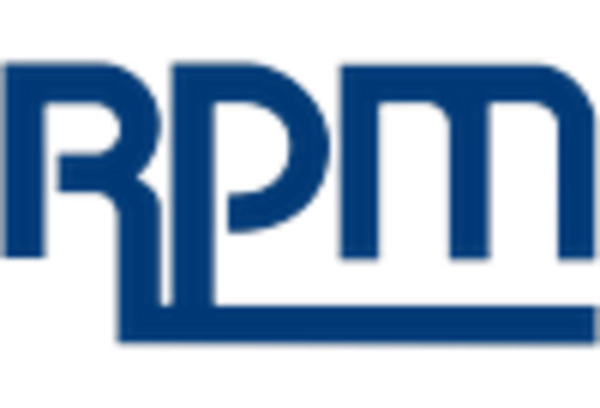
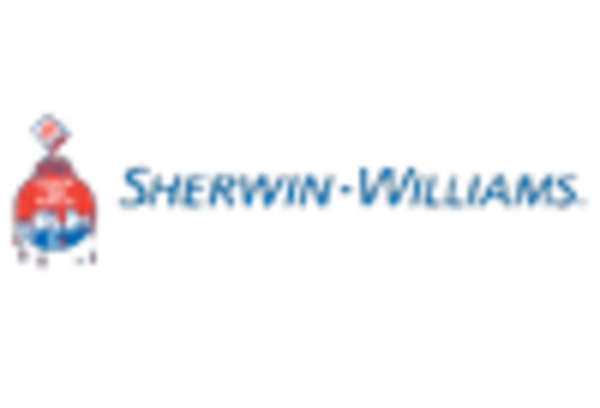









Leave a Comment